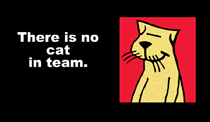 What does it mean to be flexible? Maybe for some of us it means we can arrange our schedules to accommodate work and life events. For some it may mean flexibility of opinion. In other words, some people might be willing to change their minds about certain beliefs, thoughts or even convictions. However, flexibility, while on the surface may appear to be fairly straightforward, is made up of three key elements, creativity, integrative ability and self-direction. Let’s look at each of these and see how they combine to ensure flexibility.
What does it mean to be flexible? Maybe for some of us it means we can arrange our schedules to accommodate work and life events. For some it may mean flexibility of opinion. In other words, some people might be willing to change their minds about certain beliefs, thoughts or even convictions. However, flexibility, while on the surface may appear to be fairly straightforward, is made up of three key elements, creativity, integrative ability and self-direction. Let’s look at each of these and see how they combine to ensure flexibility.
Creativity
Creativity is not just the domain of artists, poets or musicians. Everyone can and needs to be creative. Here’s how being creative helps us in our everyday lives. Being creative affords us the ability to better understand and synthesize new information. Furthermore, it opens our minds to a broader range of ideas to help solve problems. The ability to solve problems is essential to any business.
 Business is risky, it can be complicated, challenging and rewarding. All businesses need to grow in order to survive. Many say they don’t want to grow, but want to remain small. That is all well and good, but growth must occur in some manner. The catch is in knowing how to grow.
Business is risky, it can be complicated, challenging and rewarding. All businesses need to grow in order to survive. Many say they don’t want to grow, but want to remain small. That is all well and good, but growth must occur in some manner. The catch is in knowing how to grow.
People are Key
Whether you have 5, 500 or 5,000 employees, developing people is essential to the growth and survival of your organization. If your business is to grow, you need people. A start up needs people who are willing to commit to your dream, wear many hats and put in the time and effort to keep the business afloat. As the business becomes larger, people with more defined, specific skills will be required. You will need people who can market, people who can sell, people who can organize, people who can run operations and systems, well, you get the picture. Here are ideas that can help structure a successful growth program.
 Disclaimer. In no way is this article meant to condone the use of drugs, illegal or otherwise. Nor is this a campaign to state an opinion as to whether drugs that are currently illegal be made legal.
Disclaimer. In no way is this article meant to condone the use of drugs, illegal or otherwise. Nor is this a campaign to state an opinion as to whether drugs that are currently illegal be made legal.
Businesses compete in a number of ways and one of the most important is customer service. Because today there is so much competition, your customer service has to be beyond excellent. Needless to say, some businesses are better at this than others. One example of this is the dark side. No I’m not talking about Darth Vader, but rather the dark net.
According to a Ted Talk eloquently delivered by Jamie Bartlett, Director of the Centre for the Analysis of Social Media at Demos, a leading UK think tank, the dark net is going mainstream with its own brand of customer service. For those unfamiliar with the dark net, visitors to this realm may surf through sites for pirated books, activists and their causes, whistle blowers, illegal porn, and drugs. The business of illegal drugs is the focus of Mr. Bartlett’s Ted Talk.
Mr. Bartlett tells us that when one searches for illegal drugs on the dark net, one finds web pages of high quality with well-done images of products with detailed descriptions. The descriptions appear to include even how the product is made, thus alluding to its quality and purity – a major concern of drug users.
 After writing about high potentials in the nine part “Play it Again, Sam” series and having a coaching client who is taking a hard look at identifying high potentials in her organization, I wanted to explore this topic a bit further.
After writing about high potentials in the nine part “Play it Again, Sam” series and having a coaching client who is taking a hard look at identifying high potentials in her organization, I wanted to explore this topic a bit further.
The Difference Between a High Performer and a High potential
A classic error many organizations make is promoting their top sales person to be the sales manager. More often than not, this ends in disaster. Just because someone can sell, doesn’t mean he or she can manage others or the sales process for that matter. The sales rep was a high performer, not a high potential. Now you promote the person who should have been promoted and he or she may feel like the second choice or the individual may have already quit for being passed over. It can be difficult to zero in on high potentials. More about that later. Michael Wilk with Profile International suggests 10 questions to ask in ferreting out a high potential.
 Anyone who follows these blogs, (thank you if you do!) knows that I am not a marking expert. However, this blog post may help you to see your marketing efforts in a different way. Your marketing team may be larger than you think. This is because, marketing is not an isolated function of any one department or organization and the CEO and the leadership team play an integral role in marketing. For example, can your leadership team answer these two questions?
Anyone who follows these blogs, (thank you if you do!) knows that I am not a marking expert. However, this blog post may help you to see your marketing efforts in a different way. Your marketing team may be larger than you think. This is because, marketing is not an isolated function of any one department or organization and the CEO and the leadership team play an integral role in marketing. For example, can your leadership team answer these two questions?
- Which products or services provide our largest margins?
- Why or how are we better than our competition?
There are three important ideas that help you be better than your competition.
Three Ideas to Help Marketing Efforts
- It is essential to establish a culture of innovation and to reward employees for being innovative.
- Establish a process of continuous customer reconnaissance. This means visiting with the top 20% of your customer base that is making you successful. This may mean getting on a plane, but the idea is it’s all about that important face-to-face contact.
- Conduct a SWOT exercise that examines the strengths, weaknesses, opportunities and threats to your organization. Typically most organizations limit this to a once a year event (or less) and only include the top executives. Rather a SWOT should be conducted more often and include input from employees in every corner of the company. Each department should conduct its own SWOT. This allows those on the front line to provide critical input. Then the department head or an elected employee should present the findings and participate in an organizational wide SWOT analysis. The leaders should then share the findings and next steps with the entire organization so the employee can see that they had a direct impact on the marketing and other company initiatives.
Critical Questions
- What is the company’s growth strategy? This is critical because as a company grows and adds layers of hierarchy and bureaucracy, it is more difficult to stay agile in order to respond quickly to new opportunities. Decision-making becomes slower and leadership may feel an overwhelming desire to play it safe.
- How do your products/services solve your customer’s problems? Isn’t this what you went into business for in the first place? This may mean getting back to your core business.
- How do marketing, sales and product development integrate and effectively work together? A lack of collaboration and cooperation from these can be the cause of slow product development and delivery ultimately leading to poor customer service.
Look at your “marketing team” from this new prospective. Then establish the culture and customer reconnaissance outlined in this blog. That will keep the company’s products and services differentiated in the marketplace, your marketing efforts on the cutting edge, your customer service second to none and your entire marketing team fully engaged.
Graphic Credit: Big Stock.com
 The title is taking license with the real phrase, “necessity is the mother of invention.” We are not big on guests and frankly have turned our guest room into an office/studio. But recently we had a visitor to stay a couple of nights and the only thing we have resembling a bed is a single size air mattress. The guest is not a nimble young person, and I knew I needed to get the mattress off the floor a bit. My imagination went into overdrive.
The title is taking license with the real phrase, “necessity is the mother of invention.” We are not big on guests and frankly have turned our guest room into an office/studio. But recently we had a visitor to stay a couple of nights and the only thing we have resembling a bed is a single size air mattress. The guest is not a nimble young person, and I knew I needed to get the mattress off the floor a bit. My imagination went into overdrive.

There are two camps, those who see the big picture and those who are detailed oriented. There are some individuals who are lucky enough to see both the big picture and not lose sight of the details. The difference between these two skills is that being detailed oriented is more about having a focused eye on tasks. The big picture falls more into the strategic side of business. Which is more important? It depends.
Many CEOs and other executives think that they should be the only ones who are capable of or who need to see the big picture and that line employees just need to concentrate on the details or the tasks at hand. Is this smart?
 A quote attributed to Ralph Nadar, consumer advocate, lawyer, and author, states: “I start with the premise, that the function of leadership is to produce more leaders, not more followers.” The leadership in small to mid-sized organizations often fail to see a need for leadership development. Considering two facts should make it obvious that leadership development is essential to the survival of such organizations. A White Paper by Center for Creative Leadership echoes this idea.
A quote attributed to Ralph Nadar, consumer advocate, lawyer, and author, states: “I start with the premise, that the function of leadership is to produce more leaders, not more followers.” The leadership in small to mid-sized organizations often fail to see a need for leadership development. Considering two facts should make it obvious that leadership development is essential to the survival of such organizations. A White Paper by Center for Creative Leadership echoes this idea.
Fact One: An organization is either growing or dying
Fact Two: Leadership will be needed to guide growth, sustain growth, and take growth into the future.
Let’s take a deeper look at fact one. Organizations must grow in some capacity, either more customers or more revenue. The leadership that brings the company to one level, may not necessarily have the skills to either sustain that level or take the company to the next level.
 Consistency is a good thing. “Leadership paradoxes” prevent consistency. This is according to a white paper by I/O At Work . This white paper entitled “Leadership Research Trends & Insights” is chock full of interesting ideas and the latest research on leadership. In fact, some of it might make your head spin. I didn’t think that “paradoxes” is a word, but indeed it is. I visited a website about paradoxes by Encyclopedia Britannica and it just gave me a headache. Trying to lead during a paradox situation at work will no doubt give you a headache as well.
Consistency is a good thing. “Leadership paradoxes” prevent consistency. This is according to a white paper by I/O At Work . This white paper entitled “Leadership Research Trends & Insights” is chock full of interesting ideas and the latest research on leadership. In fact, some of it might make your head spin. I didn’t think that “paradoxes” is a word, but indeed it is. I visited a website about paradoxes by Encyclopedia Britannica and it just gave me a headache. Trying to lead during a paradox situation at work will no doubt give you a headache as well.
The white paper offers that leaders who can engage in big picture thinking seem to fare better during paradoxical times. This has to do with the ability to see different perspectives. In other words, the paper goes on, clinging to one philosophy or perspective if you will, just for the sake of chasing consistency never works.
 Recently, I was debriefing a client on a leadership program I had just conducted and we were discussing some follow-up coaching. I assured the President that I would ensure that everyone aligns with the vision of the organization, to which he replied, “Oh we have lots of visions here.” At first, I thought he was being facetious, unfortunately, he was being serious. Even scarier, he thinks it a good thing for everyone to have different visions. Going forward, to say I have my work cut out for me is an understatement.
Recently, I was debriefing a client on a leadership program I had just conducted and we were discussing some follow-up coaching. I assured the President that I would ensure that everyone aligns with the vision of the organization, to which he replied, “Oh we have lots of visions here.” At first, I thought he was being facetious, unfortunately, he was being serious. Even scarier, he thinks it a good thing for everyone to have different visions. Going forward, to say I have my work cut out for me is an understatement.
In start-up companies, it is common for a great deal of energy to come from the CEO’s vision for the organization. Everyone pitches in and does whatever it takes to get a product out the door and delver outstanding customer service. In these early stages of growth, the CEO’s vision and energy keep the company on a path for growth. However, the focus is different in larger and more mature organizations.
As a company moves beyond the business leader’s span of control, communications become more difficult. This is particularly true if systems are not in place that help drive how work is accomplished. The job of the CEO now becomes one of managing the people and setting a clear picture of the future.
In church, the music minister will say, “Everyone turn to page 128 in their hymnals and lets sing (insert the name of your favorite song here.)” Suddenly, the entire congregation is on the same page, singing the same song and is doing it in harmony. How often does this occur in your organization? The ability of the CEO to refocus the company on what they are there to do and recognize the shift from the company being CEO-focused to enterprise-focused is critical. A study by Bain and Company indicated the organizations that have clearly defined vision and mission statements that are aligned with a strategic plan outperform those who do not. To ensure your organization is on the right track, consider the following questions:
 Does your team work together? No, I don’t mean do they cooperate, collaborate, and have a culture of kumbayah. Do they physically work together every day? This is an important question to ask as it can change the way you manage, save you time, and resources.
Does your team work together? No, I don’t mean do they cooperate, collaborate, and have a culture of kumbayah. Do they physically work together every day? This is an important question to ask as it can change the way you manage, save you time, and resources.
Recently, I had the opportunity to deliver a program to a group of mid-level executives, each in a different city and in charge of a different market sector for their organization. The manager, a VP in the organization was intent on teambuilding and that had been his management focus. However, during the program, one of the participants stated aloud that he found no benefit in their weekly teambuilding phone calls. Ouch!
The executive and I looked at his team and he realized that that they don’t work together or even depend on one another for resources or business. While that is true, I pointed out to the manager that the concentration should be on having his team focus on the strategic plan, ensure that each of his managers buys into the vision for the organization, and then drive that vision throughout their own teams. But don’t they still need to collaborate and cooperate? Glad you asked.
 When sitting down to write this blog, the question came to mind, “Do we humans enjoy fear?” The question came up because we (humans) it appears keep piling the fears on, like the fear of black cats, spiders, the unknown, change, and now the future of work. Do we enjoy fear?
When sitting down to write this blog, the question came to mind, “Do we humans enjoy fear?” The question came up because we (humans) it appears keep piling the fears on, like the fear of black cats, spiders, the unknown, change, and now the future of work. Do we enjoy fear?
 According to a recent study by the Society for Human Resource Management (SHRM), turnover varies by industry with the food & service industry along with the arts and entertainment industries and retail having the highest turnover with an average of 28% between them. Those having the lowest turnover are high-tech, government, associations and utilities. The average among these industries is only 9%. When calculating losses due to turnover, organizations must consider why they have turnover. For example, according to SHRM’s study, hospitality, arts/entertainment and retail may have seasonal or cyclical turnover. Some industries pay lower than others and the first offer of even a small increase in pay will lure employees away. If yours is an industry where the skill gap is growing, turnover can be a critical factor in organizational growth.
According to a recent study by the Society for Human Resource Management (SHRM), turnover varies by industry with the food & service industry along with the arts and entertainment industries and retail having the highest turnover with an average of 28% between them. Those having the lowest turnover are high-tech, government, associations and utilities. The average among these industries is only 9%. When calculating losses due to turnover, organizations must consider why they have turnover. For example, according to SHRM’s study, hospitality, arts/entertainment and retail may have seasonal or cyclical turnover. Some industries pay lower than others and the first offer of even a small increase in pay will lure employees away. If yours is an industry where the skill gap is growing, turnover can be a critical factor in organizational growth.
Another cause of high turnover is employee morale. Feelings of being undervalued can often trigger low morale. The CEO will find it more difficult to interact with each employee on an individual basis as the company grows and more employees come on board. Therefore, it becomes essential for a CEO to stay vigilant about how managers align employee performance around company goals. This one act alone will help clear the field of those who are not on board with organizational goals and ensure a better fit for jobs leading to higher morale and better retention.

Strategic thinking, much less strategic planning, can be a foreign topic to many team members. Yes, even executives. This begs the question, how did these people ever get to be executives if they are not able to think strategically? That’s a good question, but one for another blog. This blog will help you determine if your team is thinking strategically and what to do if they aren’t.
Here is a hypothetical situation of what can happen. Let’s say an organization recently completed their two year strategic plan. Great start. Their plan calls for a large monetary goal to be reached in just two years. Setting an aggressive, yet reachable goal, is another good thing. The implantation of their plan, may be a little more elusive. Here are some reasons why this may be true.
- Most of the team members are not strategic thinkers
- There is no accountability
- Talent management could use some tweaks
Let’s take a look at each of these factors and see what can be changed to implement a strategic plan.
 The sales process is changing from one of being process driven to one of relying on the insight and judgment of the sales representative. Why is this? Today’s customers can now find their own information about products, pricing, quality, and service levels for any industry or product. In other words, the customer is relying less on the sales person to “sell” them on the benefits of goods and services. More than likely, the customer has already sold themselves before they ever enter a store, showroom or sales event. Therefore, the sales professional requires less adherence to protocols, inspection, direction, and structure. What is needed is more guidance and support from managers. This fact alone demands a coaching platform. There are, however, considerations to examine.
The sales process is changing from one of being process driven to one of relying on the insight and judgment of the sales representative. Why is this? Today’s customers can now find their own information about products, pricing, quality, and service levels for any industry or product. In other words, the customer is relying less on the sales person to “sell” them on the benefits of goods and services. More than likely, the customer has already sold themselves before they ever enter a store, showroom or sales event. Therefore, the sales professional requires less adherence to protocols, inspection, direction, and structure. What is needed is more guidance and support from managers. This fact alone demands a coaching platform. There are, however, considerations to examine.
Many managers lack coaching skills. Outside coaches can be brought in to achieve the task and this works well as a successful coaching relationship does not require years of having an established relationship, but rather trust is the key. Once trust is established and the coach and coachee feel they work well together, then great progress is achievable. In addition, it is wise to be sure a coach has good credentials.
 On a survey gathering data for a retreat for a client, there were questions about their succession planning program. After receiving a survey back, I would interview each respondent to gather some deeper info as to reasons behind their answers. One person commented: “I really haven’t made any plans to replace myself.” Succession planning is about you, but not ALL about you. Another respondent commented, “I don’t know what we’re going to do when Bernice leaves.” Bernice, not her real name, is the CEO. These team members obviously haven’t a clue as to what it takes to launch the succession planning rocket. Further, they fail to understand the full purpose and impact of a succession planning program.
On a survey gathering data for a retreat for a client, there were questions about their succession planning program. After receiving a survey back, I would interview each respondent to gather some deeper info as to reasons behind their answers. One person commented: “I really haven’t made any plans to replace myself.” Succession planning is about you, but not ALL about you. Another respondent commented, “I don’t know what we’re going to do when Bernice leaves.” Bernice, not her real name, is the CEO. These team members obviously haven’t a clue as to what it takes to launch the succession planning rocket. Further, they fail to understand the full purpose and impact of a succession planning program.
In addition to a misunderstanding about who to include in a succession planning program, the following items received low to moderate scores:
- Talent Management
- Training and Development
- Accountability
- Coaching and Mentoring
- Career Management
- Key Performance Indicators in Place
The above items are key components in launching any succession plan. Without these, even if you have a plan, it can’t be a good one. One point is clear though. The statement, “I don’t know what we’re going to do when Bernice leaves.” is a clear signal that a succession plan is non-existent. Without a plan, there may be chaos among those who want the position, or no clear choice among the team, or there may be no one who is ready to move the strategic plan forward. The organization will lose ground, and market share with no one ready to take the helm. This rocket topples over on the launch pad.
 You no doubt have read numerous articles about ensuring that you have the right people on the bus and making sure they are sitting in the right seat on the bus. First of all, we’re going to assume that your bus is heading in the right direction and that its wheels have not fallen off. So if your bus is not on course and intact, your hiring process can certainly help to begin repairs. For example, if you use a four-part hiring system such as:
You no doubt have read numerous articles about ensuring that you have the right people on the bus and making sure they are sitting in the right seat on the bus. First of all, we’re going to assume that your bus is heading in the right direction and that its wheels have not fallen off. So if your bus is not on course and intact, your hiring process can certainly help to begin repairs. For example, if you use a four-part hiring system such as:
- Behavioral Interviewing
- Assessments
- Background checks
- Drug Tests
then you should have good luck in selecting the right person for the job at hand. Of course, there are other activities that help as well,
 According to an article in HR Magazine, collaborative teams are an essential element today for success in business. Everybody knows that.
According to an article in HR Magazine, collaborative teams are an essential element today for success in business. Everybody knows that.
Well did you know…?
That a collaborative culture must be established by leadership in order for collaborative teams to develop. Collaboration must be encouraged both on the home doorstep and the doorstep of virtual teams. Teamwork must be valued and good performance rewarded for both teams and individuals. Everybody knows that.
Well did you know…?
 There is a Senior VP who wants to be CEO of his company. The reason he wants to be CEO is so he “… can sit back and put his feet up on the desk.” I’ll pause here to give all you current CEOs a few minutes to stop laughing. Ok, ready to continue? While it’s true that most CEOs don’t have to do manual labor like breaking up rocks and such, the job, as you well know, is definitely not one where you just sit back and put your feet up. Every job has two sides, one you like and the other you don’t, some days are easy, most are not. Being a CEO is no different.
There is a Senior VP who wants to be CEO of his company. The reason he wants to be CEO is so he “… can sit back and put his feet up on the desk.” I’ll pause here to give all you current CEOs a few minutes to stop laughing. Ok, ready to continue? While it’s true that most CEOs don’t have to do manual labor like breaking up rocks and such, the job, as you well know, is definitely not one where you just sit back and put your feet up. Every job has two sides, one you like and the other you don’t, some days are easy, most are not. Being a CEO is no different.
What does a CEO need to do his/her job well?
 In a recent article in Kornferry Briefings, an interview with Clara Gaymard, President and CEO GE France, Ms. Gaymard reveals how walking a mile in someone else’s shoes can benefit customers and give new life to a failing ROI.
In a recent article in Kornferry Briefings, an interview with Clara Gaymard, President and CEO GE France, Ms. Gaymard reveals how walking a mile in someone else’s shoes can benefit customers and give new life to a failing ROI.
Having a desire to sell their magnetic resonance imaging machines or MRIs and wanting both a good ROI and the machines to have the largest impact; GE began researching countries with the greatest need for the machines. This research revealed that the wait for an MRI in France was 45 days. This is much longer than the waits in Germany, the UK, and so on.
Business Lesson #1: Find the need for your product or service. As the old saying goes, you may be able to sell a bikini to an Eskimo, but does the customer really want one?
Logically, GE offers the MRIs to the health ministers in France. One might reason that the government of France would be all too happy to upgrade its health care system and provide its citizens with quick access to such an important health benefit. Not so fast, Dr. No. The health ministers, on the other hand, reason that their obligation is how to cut health care costs and give their ROI a shot in the arm.
 What does it mean to be flexible? Maybe for some of us it means we can arrange our schedules to accommodate work and life events. For some it may mean flexibility of opinion. In other words, some people might be willing to change their minds about certain beliefs, thoughts or even convictions. However, flexibility, while on the surface may appear to be fairly straightforward, is made up of three key elements, creativity, integrative ability and self-direction. Let’s look at each of these and see how they combine to ensure flexibility.
What does it mean to be flexible? Maybe for some of us it means we can arrange our schedules to accommodate work and life events. For some it may mean flexibility of opinion. In other words, some people might be willing to change their minds about certain beliefs, thoughts or even convictions. However, flexibility, while on the surface may appear to be fairly straightforward, is made up of three key elements, creativity, integrative ability and self-direction. Let’s look at each of these and see how they combine to ensure flexibility.
 Disclaimer. In no way is this article meant to condone the use of drugs, illegal or otherwise. Nor is this a campaign to state an opinion as to whether drugs that are currently illegal be made legal.
Disclaimer. In no way is this article meant to condone the use of drugs, illegal or otherwise. Nor is this a campaign to state an opinion as to whether drugs that are currently illegal be made legal. After writing about high potentials in the nine part “Play it Again, Sam” series and having a coaching client who is taking a hard look at identifying high potentials in her organization, I wanted to explore this topic a bit further.
After writing about high potentials in the nine part “Play it Again, Sam” series and having a coaching client who is taking a hard look at identifying high potentials in her organization, I wanted to explore this topic a bit further. Anyone who follows these blogs, (thank you if you do!) knows that I am not a marking expert. However, this blog post may help you to see your marketing efforts in a different way. Your marketing team may be larger than you think. This is because, marketing is not an isolated function of any one department or organization and the CEO and the leadership team play an integral role in marketing. For example, can your leadership team answer these two questions?
Anyone who follows these blogs, (thank you if you do!) knows that I am not a marking expert. However, this blog post may help you to see your marketing efforts in a different way. Your marketing team may be larger than you think. This is because, marketing is not an isolated function of any one department or organization and the CEO and the leadership team play an integral role in marketing. For example, can your leadership team answer these two questions? The title is taking license with the real phrase, “necessity is the mother of invention.” We are not big on guests and frankly have turned our guest room into an office/studio. But recently we had a visitor to stay a couple of nights and the only thing we have resembling a bed is a single size air mattress. The guest is not a nimble young person, and I knew I needed to get the mattress off the floor a bit. My imagination went into overdrive.
The title is taking license with the real phrase, “necessity is the mother of invention.” We are not big on guests and frankly have turned our guest room into an office/studio. But recently we had a visitor to stay a couple of nights and the only thing we have resembling a bed is a single size air mattress. The guest is not a nimble young person, and I knew I needed to get the mattress off the floor a bit. My imagination went into overdrive.
 A quote attributed to Ralph Nadar, consumer advocate, lawyer, and author, states: “I start with the premise, that the function of leadership is to produce more leaders, not more followers.” The leadership in small to mid-sized organizations often fail to see a need for leadership development. Considering two facts should make it obvious that leadership development is essential to the survival of such organizations. A
A quote attributed to Ralph Nadar, consumer advocate, lawyer, and author, states: “I start with the premise, that the function of leadership is to produce more leaders, not more followers.” The leadership in small to mid-sized organizations often fail to see a need for leadership development. Considering two facts should make it obvious that leadership development is essential to the survival of such organizations. A  Consistency is a good thing. “Leadership paradoxes” prevent consistency. This is according to a white paper by
Consistency is a good thing. “Leadership paradoxes” prevent consistency. This is according to a white paper by  Recently, I was debriefing a client on a leadership program I had just conducted and we were discussing some follow-up coaching. I assured the President that I would ensure that everyone aligns with the vision of the organization, to which he replied, “Oh we have lots of visions here.” At first, I thought he was being facetious, unfortunately, he was being serious. Even scarier, he thinks it a good thing for everyone to have different visions. Going forward, to say I have my work cut out for me is an understatement.
Recently, I was debriefing a client on a leadership program I had just conducted and we were discussing some follow-up coaching. I assured the President that I would ensure that everyone aligns with the vision of the organization, to which he replied, “Oh we have lots of visions here.” At first, I thought he was being facetious, unfortunately, he was being serious. Even scarier, he thinks it a good thing for everyone to have different visions. Going forward, to say I have my work cut out for me is an understatement. Does your team work together? No, I don’t mean do they cooperate, collaborate, and have a culture of kumbayah. Do they physically work together every day? This is an important question to ask as it can change the way you manage, save you time, and resources.
Does your team work together? No, I don’t mean do they cooperate, collaborate, and have a culture of kumbayah. Do they physically work together every day? This is an important question to ask as it can change the way you manage, save you time, and resources. When sitting down to write this blog, the question came to mind, “Do we humans enjoy fear?” The question came up because we (humans) it appears keep piling the fears on, like the fear of black cats, spiders, the unknown, change, and now the future of work. Do we enjoy fear?
When sitting down to write this blog, the question came to mind, “Do we humans enjoy fear?” The question came up because we (humans) it appears keep piling the fears on, like the fear of black cats, spiders, the unknown, change, and now the future of work. Do we enjoy fear? According to a recent study by the Society for Human Resource Management (SHRM), turnover varies by industry with the food & service industry along with the arts and entertainment industries and retail having the highest turnover with an average of 28% between them. Those having the lowest turnover are high-tech, government, associations and utilities. The average among these industries is only 9%. When calculating losses due to turnover, organizations must consider why they have turnover. For example, according to SHRM’s study, hospitality, arts/entertainment and retail may have seasonal or cyclical turnover. Some industries pay lower than others and the first offer of even a small increase in pay will lure employees away. If yours is an industry where the skill gap is growing, turnover can be a critical factor in organizational growth.
According to a recent study by the Society for Human Resource Management (SHRM), turnover varies by industry with the food & service industry along with the arts and entertainment industries and retail having the highest turnover with an average of 28% between them. Those having the lowest turnover are high-tech, government, associations and utilities. The average among these industries is only 9%. When calculating losses due to turnover, organizations must consider why they have turnover. For example, according to SHRM’s study, hospitality, arts/entertainment and retail may have seasonal or cyclical turnover. Some industries pay lower than others and the first offer of even a small increase in pay will lure employees away. If yours is an industry where the skill gap is growing, turnover can be a critical factor in organizational growth.
 The sales process is changing from one of being process driven to one of relying on the insight and judgment of the sales representative. Why is this? Today’s customers can now find their own information about products, pricing, quality, and service levels for any industry or product. In other words, the customer is relying less on the sales person to “sell” them on the benefits of goods and services. More than likely, the customer has already sold themselves before they ever enter a store, showroom or sales event. Therefore, the sales professional requires less adherence to protocols, inspection, direction, and structure. What is needed is more guidance and support from managers. This fact alone demands a coaching platform. There are, however, considerations to examine.
The sales process is changing from one of being process driven to one of relying on the insight and judgment of the sales representative. Why is this? Today’s customers can now find their own information about products, pricing, quality, and service levels for any industry or product. In other words, the customer is relying less on the sales person to “sell” them on the benefits of goods and services. More than likely, the customer has already sold themselves before they ever enter a store, showroom or sales event. Therefore, the sales professional requires less adherence to protocols, inspection, direction, and structure. What is needed is more guidance and support from managers. This fact alone demands a coaching platform. There are, however, considerations to examine. On a survey gathering data for a retreat for a client, there were questions about their succession planning program. After receiving a survey back, I would interview each respondent to gather some deeper info as to reasons behind their answers. One person commented: “I really haven’t made any plans to replace myself.” Succession planning is about you, but not ALL about you. Another respondent commented, “I don’t know what we’re going to do when Bernice leaves.” Bernice, not her real name, is the CEO. These team members obviously haven’t a clue as to what it takes to launch the succession planning rocket. Further, they fail to understand the full purpose and impact of a succession planning program.
On a survey gathering data for a retreat for a client, there were questions about their succession planning program. After receiving a survey back, I would interview each respondent to gather some deeper info as to reasons behind their answers. One person commented: “I really haven’t made any plans to replace myself.” Succession planning is about you, but not ALL about you. Another respondent commented, “I don’t know what we’re going to do when Bernice leaves.” Bernice, not her real name, is the CEO. These team members obviously haven’t a clue as to what it takes to launch the succession planning rocket. Further, they fail to understand the full purpose and impact of a succession planning program. You no doubt have read numerous articles about ensuring that you have the right people on the bus and making sure they are sitting in the right seat on the bus. First of all, we’re going to assume that your bus is heading in the right direction and that its wheels have not fallen off. So if your bus is not on course and intact, your hiring process can certainly help to begin repairs. For example, if you use a four-part hiring system such as:
You no doubt have read numerous articles about ensuring that you have the right people on the bus and making sure they are sitting in the right seat on the bus. First of all, we’re going to assume that your bus is heading in the right direction and that its wheels have not fallen off. So if your bus is not on course and intact, your hiring process can certainly help to begin repairs. For example, if you use a four-part hiring system such as: According to an article in HR Magazine, collaborative teams are an essential element today for success in business. Everybody knows that.
According to an article in HR Magazine, collaborative teams are an essential element today for success in business. Everybody knows that. There is a Senior VP who wants to be CEO of his company. The reason he wants to be CEO is so he “… can sit back and put his feet up on the desk.” I’ll pause here to give all you current CEOs a few minutes to stop laughing. Ok, ready to continue? While it’s true that most CEOs don’t have to do manual labor like breaking up rocks and such, the job, as you well know, is definitely not one where you just sit back and put your feet up. Every job has two sides, one you like and the other you don’t, some days are easy, most are not. Being a CEO is no different.
There is a Senior VP who wants to be CEO of his company. The reason he wants to be CEO is so he “… can sit back and put his feet up on the desk.” I’ll pause here to give all you current CEOs a few minutes to stop laughing. Ok, ready to continue? While it’s true that most CEOs don’t have to do manual labor like breaking up rocks and such, the job, as you well know, is definitely not one where you just sit back and put your feet up. Every job has two sides, one you like and the other you don’t, some days are easy, most are not. Being a CEO is no different. In a recent article in Kornferry Briefings, an interview with Clara Gaymard, President and CEO GE France, Ms. Gaymard reveals how walking a mile in someone else’s shoes can benefit customers and give new life to a failing ROI.
In a recent article in Kornferry Briefings, an interview with Clara Gaymard, President and CEO GE France, Ms. Gaymard reveals how walking a mile in someone else’s shoes can benefit customers and give new life to a failing ROI.